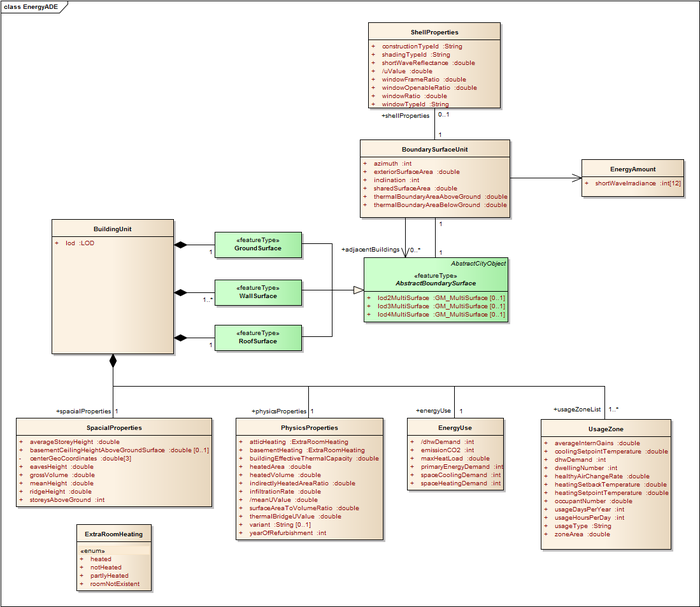Difference between revisions of "2014 S HfT EnergyADE"
| Line 7: | Line 7: | ||
====The HFT Stuttgart proposal for an EnergyADE==== | ====The HFT Stuttgart proposal for an EnergyADE==== | ||
| − | [[File:Uml-energy-ade.png | + | [[File:Uml-energy-ade.png|700px|HFT Stuttgart UML Energy ADE]] |
====The TU Munich proposal for an EnergyADE==== | ====The TU Munich proposal for an EnergyADE==== | ||
| − | [[File:UMLdiagramm_ADE_Energy_TU_Munchen.png | + | [[File:UMLdiagramm_ADE_Energy_TU_Munchen.png|700px|EnergyADE proposal of TU Munich]] |
Latest revision as of 14:04, 1 July 2014
In CityGML 2.0 a building is described by its geometry in five different level of details, and a set of sttributes such as usage, yearOf Construction, etc. More specific, the spatial entity "building" of the real world is defined by a "BuildingType" in CityGML. A BuildingType is the blueprint of every building in the real world. However, some attributes that are essential for our simulation purposes are missing in the CityGML BuildingType. The BuildingType references it's bounding surfaces. These surfaces are defined by "AbstractBoundarySurfaceType" and by the inferred types "GroundSurface", "WallSurface" and "RoofSurface".
In order to extend the BuildingType and the AbstractBoundarySurfaceType in CityGML, an Application Domain Extension (ADE) has to be developed. This ADE will be called Energy ADE. Goal: Extend the CityGML format with building energy state information data, in order to lead energy diagnostics/simulation and be able to plan energy refurbishment.
As an example take a look at the UML diagram for an EnergyADE of the HFT Stuttgart and TU München:
The HFT Stuttgart proposal for an EnergyADE

